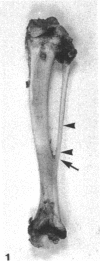Abstract
To investigate the effect of the fibula on growth of the tibia in the rat, (1) a sleeve of periosteum was removed from the middle third of the tibia, (2) a length of the fibula was excised, or (3) a sleeve of periosteum was removed from the middle third of the tibia and a length of fibula was also excised. Over a 14 wk experimental period subsequent tibial bone growth was measured on radiographs and compared with unoperated contralateral control tibiae. Procedure (1) had no effect on growth, (2) resulted in 4.2% overgrowth and (3) produced 19.7% overgrowth compared with control tibiae. The failure of overgrowth after periosteal resection from the middle third of the rat tibia argues against the vascular response theory in relation to bone overgrowth. The longitudinal overgrowth after procedure (2) and its further accentuation by procedure (3) suggests that the fibula influences tibial bone growth by exerting a mechanical restraint on it, which is reciprocal to the restraining influence of the tibial periosteum. Overgrowth appears to be facilitated by decompression of the cartilage growth plate of the rat tibia when a sleeve of the periosteum is removed from it, and this suggests a mechanical relationship between the fibrous periosteum and the cartilage growth plate of the tibia. It is concluded that the fibula plays a reciprocal role in regulating tibial bone growth in the rat.
Full text
PDF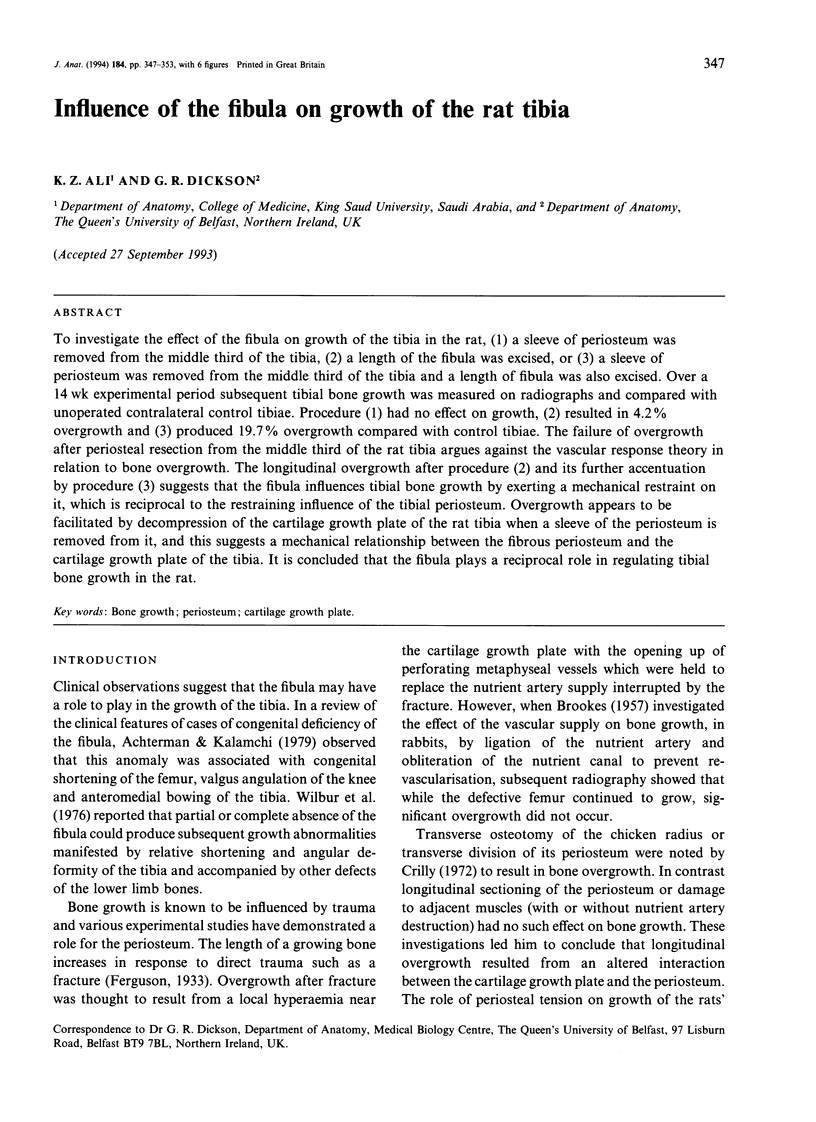
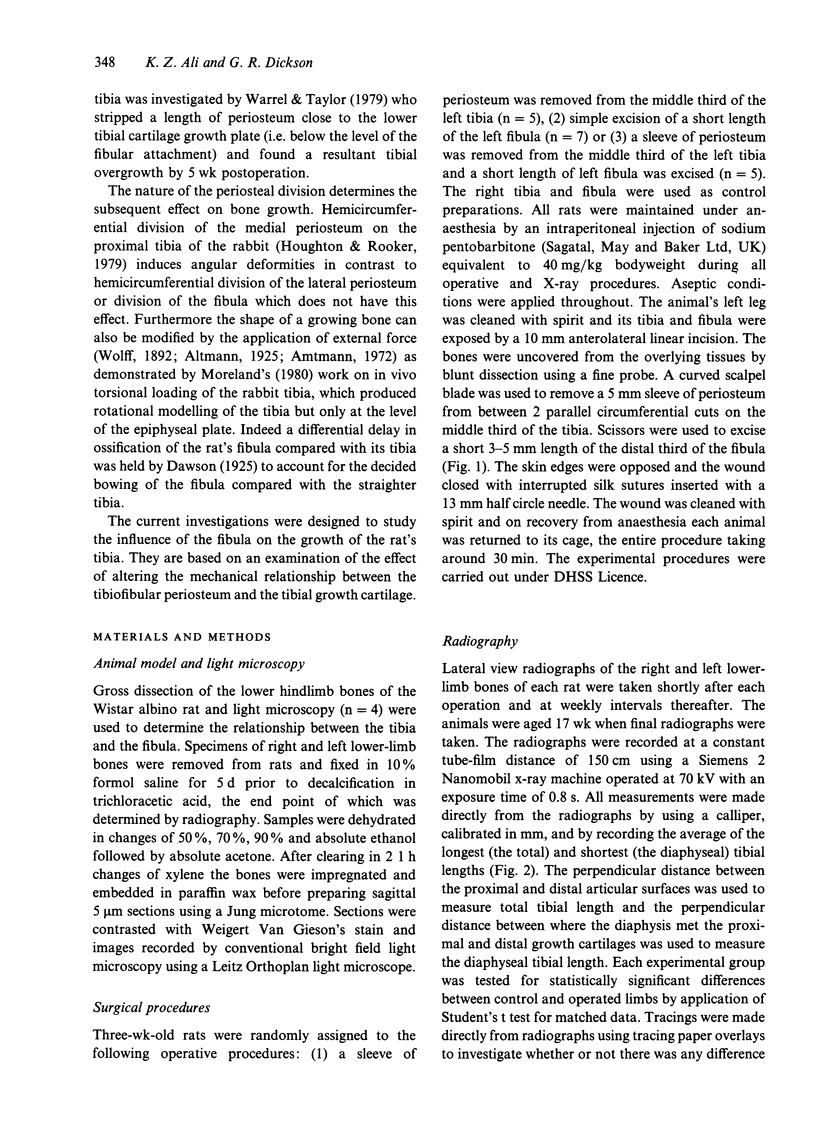

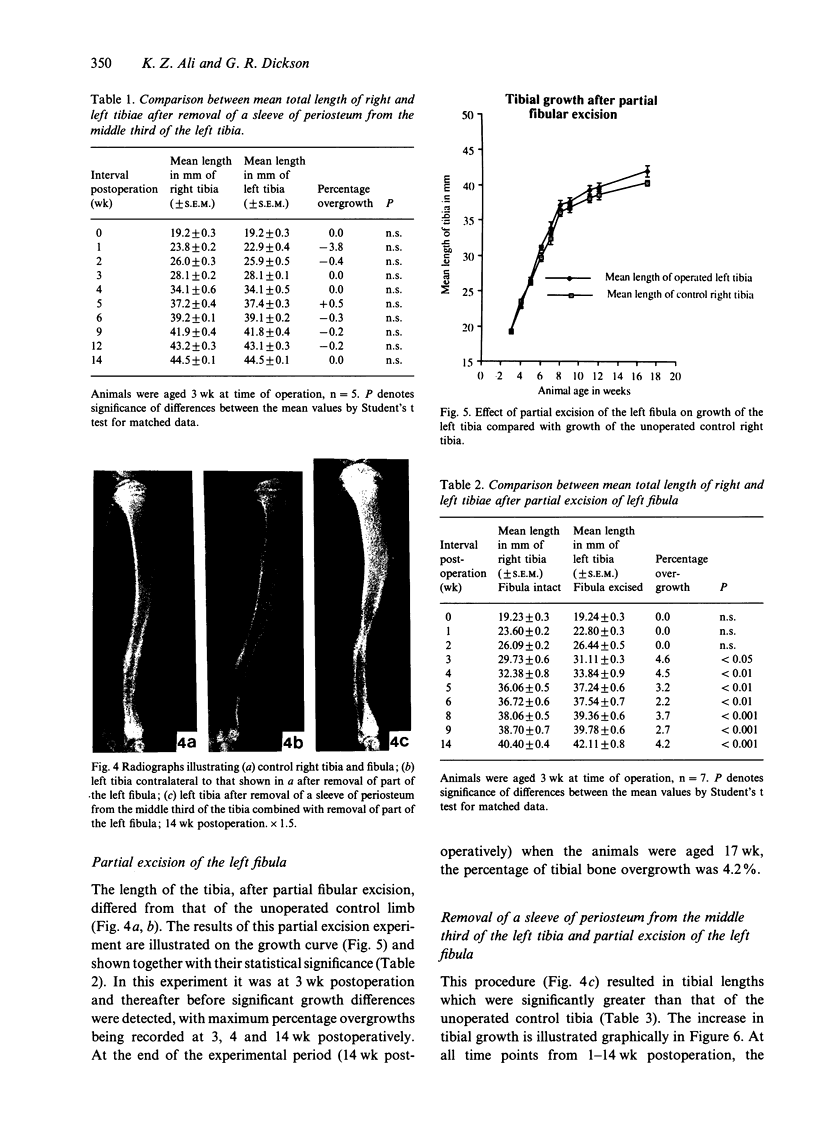
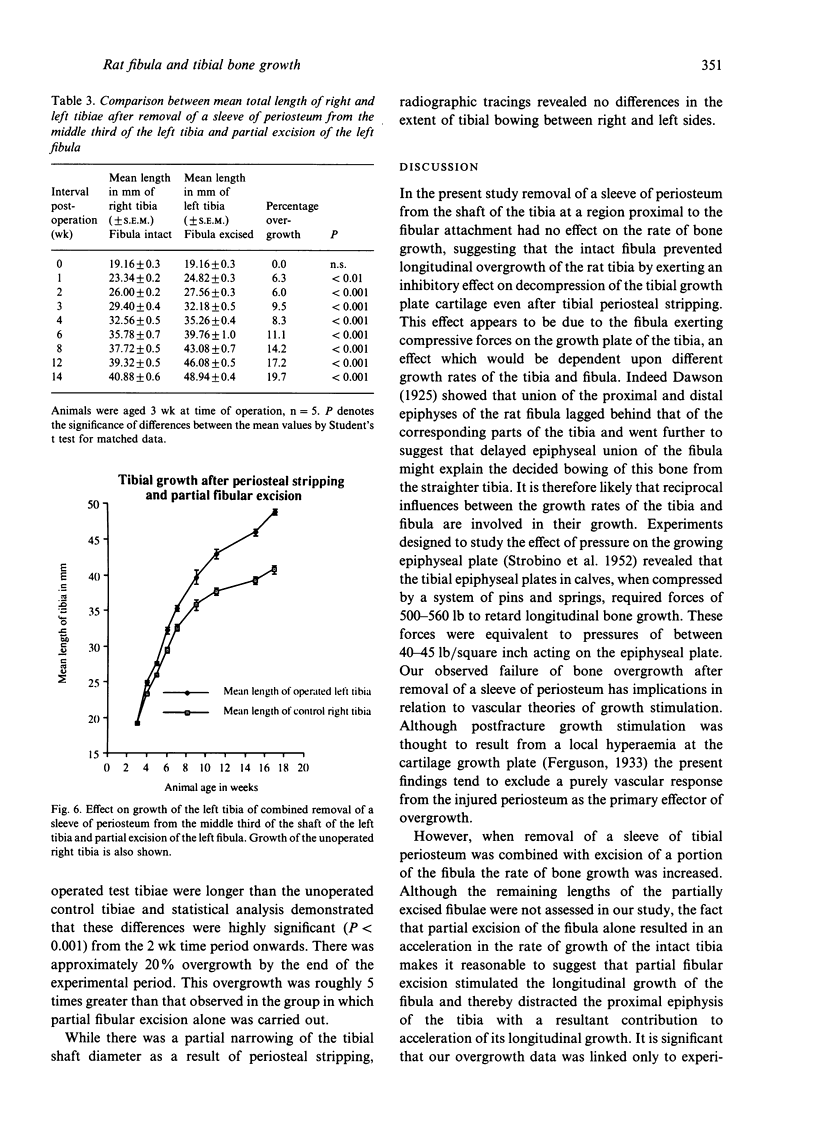

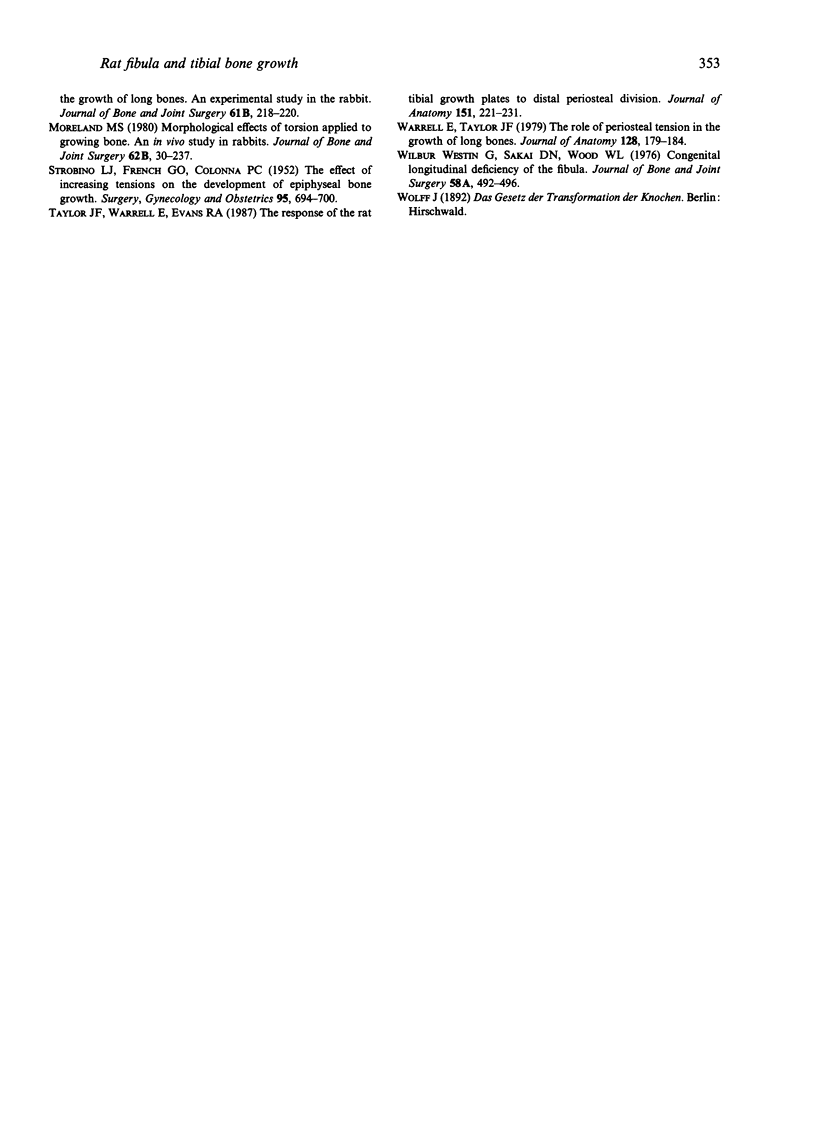
Images in this article
Selected References
These references are in PubMed. This may not be the complete list of references from this article.
- Achterman C., Kalamchi A. Congenital deficiency of the fibula. J Bone Joint Surg Br. 1979 May;61-B(2):133–137. doi: 10.1302/0301-620X.61B2.438260. [DOI] [PubMed] [Google Scholar]
- Amtmann E. On functional adaptation of long bones. Investigations on human femora. Gegenbaurs Morphol Jahrb. 1972;117(2):224–231. [PubMed] [Google Scholar]
- BROOKES M. Femoral growth after occlusion of the principal nutrient canal in day-old rabbits. J Bone Joint Surg Br. 1957 Aug;39-B(3):563–571. doi: 10.1302/0301-620X.39B3.563. [DOI] [PubMed] [Google Scholar]
- Crilly R. G. Longitudinal overgrowth of chicken radius. J Anat. 1972 May;112(Pt 1):11–18. [PMC free article] [PubMed] [Google Scholar]
- Hert J. Acceleration of the growth after decrease of load on epiphyseal plates by means of spring distractors. Folia Morphol (Praha) 1969;17(2):194–203. [PubMed] [Google Scholar]
- Houghton G. R., Rooker G. D. The role of the periosteum in the growth of long bones. An experimental study in the rabbit. J Bone Joint Surg Br. 1979 May;61-B(2):218–220. doi: 10.1302/0301-620X.61B2.438275. [DOI] [PubMed] [Google Scholar]
- Moreland M. S. Morphological effects of torsion applied to growing bone. An in vivo study in rabbits. J Bone Joint Surg Br. 1980 May;62-B(2):230–237. doi: 10.1302/0301-620X.62B2.6988435. [DOI] [PubMed] [Google Scholar]
- STROBINO L. J., FRENCH G. O., COLONNA P. C. [The effect of increasing tensions on the growth of epiphyseal bone]. Surg Gynecol Obstet. 1952 Dec;95(6):694–700. [PubMed] [Google Scholar]
- Taylor J. F., Warrell E., Evans R. A. The response of the rat tibial growth plates to distal periosteal division. J Anat. 1987 Apr;151:221–231. [PMC free article] [PubMed] [Google Scholar]
- Warrell E., Taylor J. F. The role of periosteal tension in the growth of long bones. J Anat. 1979 Jan;128(Pt 1):179–184. [PMC free article] [PubMed] [Google Scholar]
- Westin G. W., Sakai D. N., Wood W. L. Congenital longitudinal deficiency of the fibula: follow-up of treatment by Syme amputation. J Bone Joint Surg Am. 1976 Jun;58(4):492–496. [PubMed] [Google Scholar]



